Things You'll Need
Cardboard for templates
Craft knife for cutting out templates
Ripstop nylon
Bias tape for binding and for loops
Pen
Soldering gun for hot cutting
straight pins
sewing machine
polyester thread

Parafoil kites are among the most powerful kites flown today. Invented in 1963 by Domina Jalbert, parafoil kites are lifted by wind entering open cells at the front of the kite. Large parafoil kites have enormous lifting power and must be anchored securely when being flown. While some parafoil kite plans are extremely complex, you can fly one of these aerodynamic wonders on a much smaller scale.
Step 1
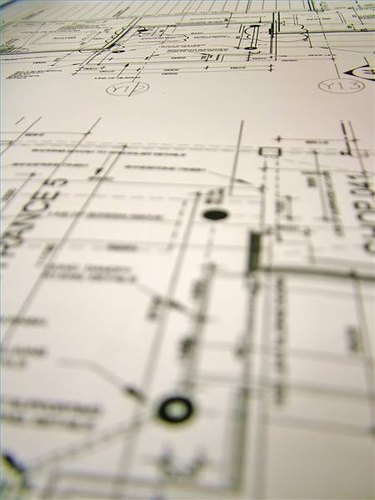
Find plans for making a parafoil kite. Parafoil kites depend on specific aerodynamic principles in order to fly safely and properly. If this is your first attempt at making a parafoil kite, you should work from plans created by a professional or experienced kite designer.
Video of the Day
Step 2

Calculate the amount of materials that you'll need. Calculate the surface area of the finished kite and multiply by 4. For example, your finished kite will be 3 feet by 4 feet. The surface area is 12 square feet. You'll need 48 square feet of ripstop nylon to make your kite.
Step 3

Decide on your color scheme and buy your fabric. Ripstop nylon works best for parafoil and other soft kites. There are two kinds of ripstop nylon coated and uncoated. Both will work fine for making parafoil kites. You can also make parafoil kites out of Tyvek, which is available at most home building supplies stores, but you won't have a choice of colors.
Step 4
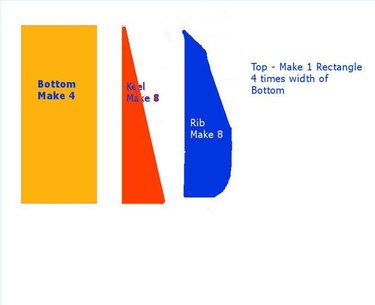
Cut out cardboard templates using the kite plans and heavy duty cardboard.
Step 5
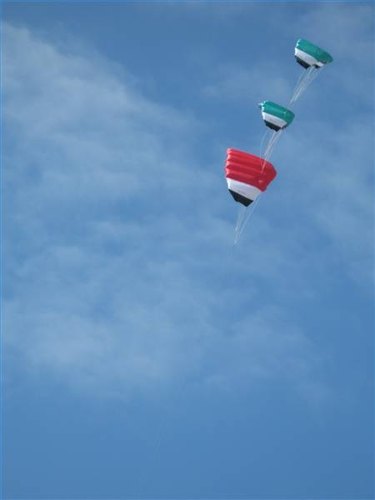
Turn kite right side out. Attach guide and fly lines when ready to launch the kite.
Step 6

Lay out your fabric on a flat surface. Using the templates as a guide, cut out the kite pattern pieces from rip-stop nylon using a soldering gun. Follow the instructions with your plan to determine how many pieces to cut from each template shape.
Step 7

Cut vent holes in each interior rib piece. Do not cut holes in the two rib pieces that will be sewn at each end. The vent holes will allow air to stabilize the pressure inside the kite when it is being flown.
Step 8

Sew one vented upright rib to center of each bottom piece.
Step 9
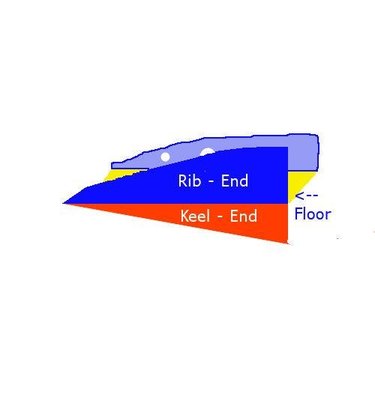
Assemble end pieces of parafoil kite using one bottom piece, one non-vented rib piece and one triangular keel piece for each end. Create loops from ribbon or bias tape and sew into seams as you go.
Step 10
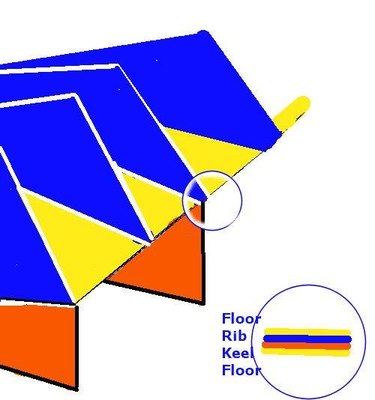
Assemble the remaining pieces by sandwiching one upright rib and one keel between two floor pieces, and attaching with straight seams. Include loops for flying and guide lines in seams.
Step 11

Mark seam lines at even intervals across top canopy piece using pen or pencil. Working from left to right and using seam lines as guides, attach one rib to the top at each seam line. To complete last seam, roll the entire kite into the last cell before sewing, as shown in diagram.
Step 12
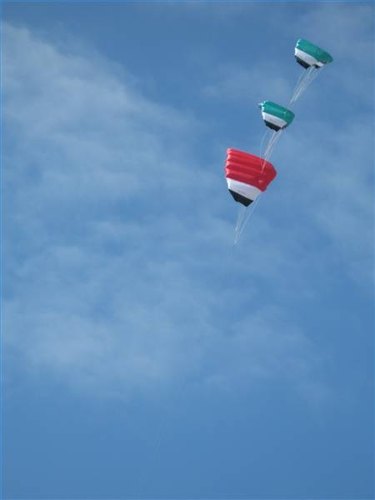
Turn kite right side out. Attach guide and fly lines when ready to launch the kite.
Tip
You can use scissors or shears to cut out kite pieces, but a soldering iron eliminates the need to zig-zag hem all sides of all pieces. Use a very fine, very sharp needle on your sewing machine for best sewing results. Use straight pins to pin pieces together before you sew each seam to keep seams straight. Use heavy duty polyester thread for sewing to avoid stretching curves out of shape when making seams.
Warning
Supervise children around sewing machine and soldering iron. Remember that parafoil kites have a very strong lift. Anchor the kite firmly when flying.
Video of the Day